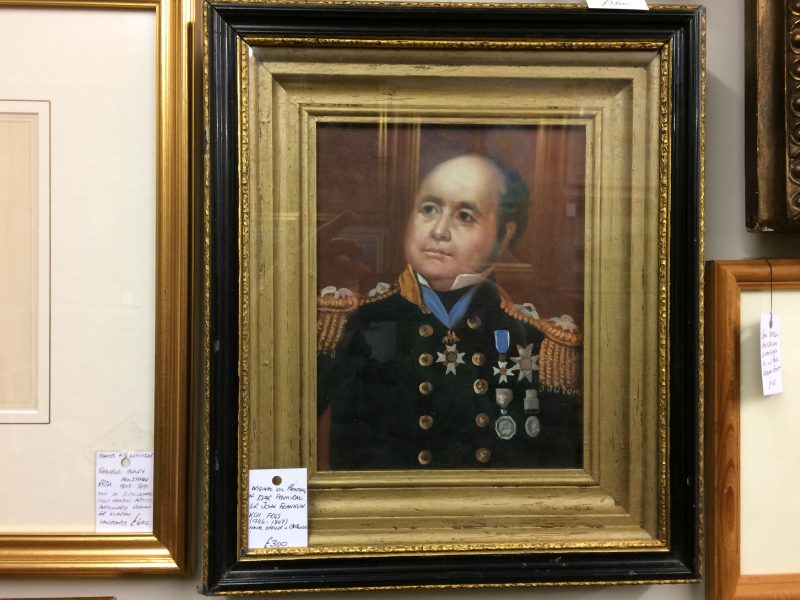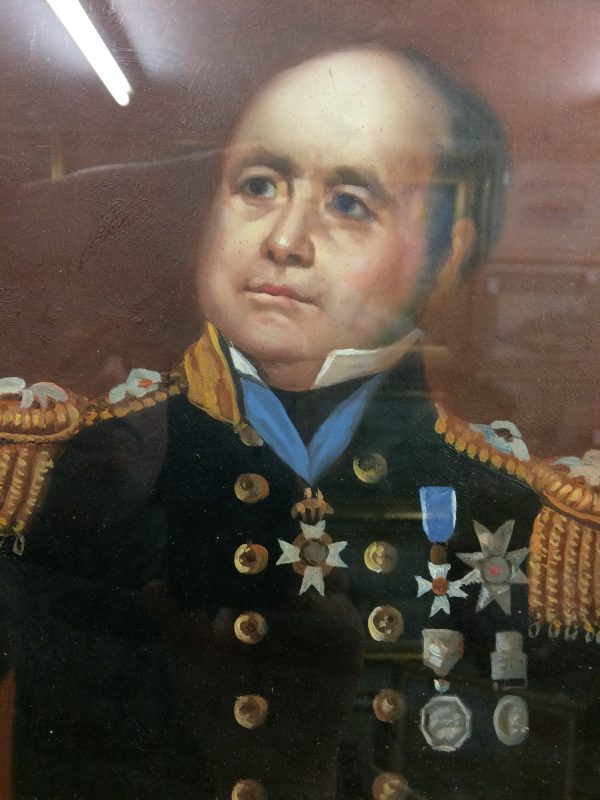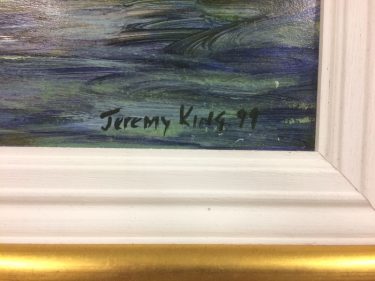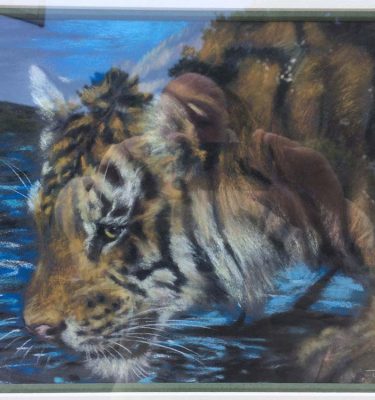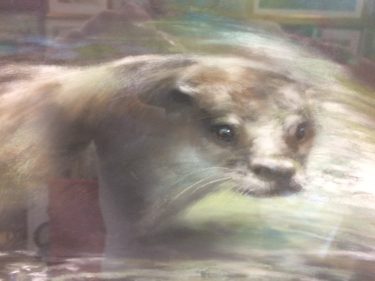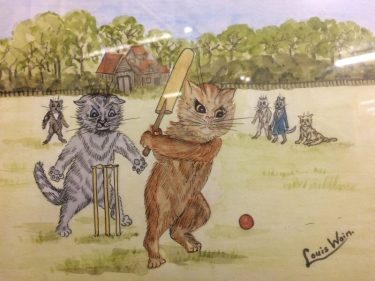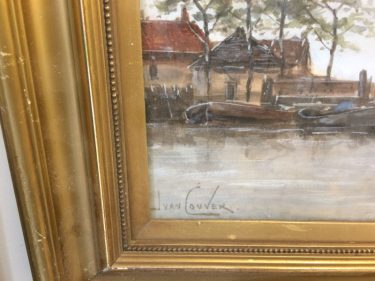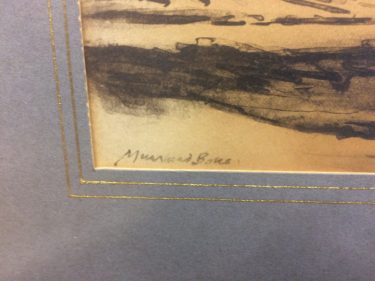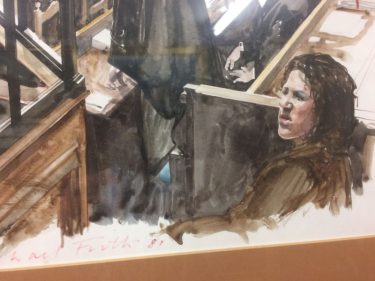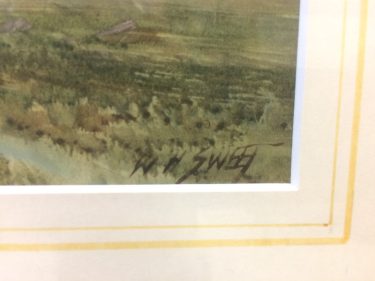Description
Here is a copy of a newspaper article about this painting:-
Franklin, Van Diemen’s Land and The Northwest Passage.
I have had a major rehang in the gallery over the last few weeks and one of the paintings I have brought in for the first time is a fantastic portrait of Sir John Franklin in a beautiful black and gold “Hogarth” glazed frame. Franklin is such an interesting character that I thought this week I would write about him.
Sir John Franklin KCH FRGS was born in Spilsby, Lincolnshire in April of 1786, the ninth of twelve children to be born to Hannah Weekes and William Franklin. His father was a merchant descended from a long line of country gentlemen and his mother was the daughter of a farmer. One of his brothers went on to become a judge and one of his sisters went on to become the wife of Alfred, Lord Tennyson.
Franklin attended King Edward VI Grammar School in Louth, his father’s aim was that he should go into the clergy, but young John only wanted to go to sea. His father managed to get him a trial voyage on a merchant ship when he was only 12, which confirmed his desire. So, at the ripe old age of 14, John Franklin joined The Royal Navy on HMS Polyphemus. Franklin joined as a first-class volunteer and soon saw action at The Battle of Copenhagen as part of Horatio Nelson’s squadron. He later served aboard HMS Bellerophon at The Battle of Trafalgar, by now a midshipman, also at The Battle of New Orleans in the same ship. By 1819 he had risen up the ranks and The Admiralty chose him to lead an overland expedition from Hudson Bay to chart the north coast of Canada from the Coppermine River eastwards, which was in The Arctic. Franklin was to lead many arctic expeditions to chart the unknown territory.
Moving forward, whilst back in Britain in 1823 he married his first wife, Eleanor, who gave him a daughter a year later but sadly died of tuberculosis in 1825. For the next three years Franklin spent his time exploring the frozen wasteland of the Arctic, charting many unknown inlets, rivers and landmarks. He returned home long enough in 1828 to marry his second wife, Jane Griffin, who was a friend of his first wife. He was knighted in April 1829 by King George IV and later that year was awarded the first Gold Medal of the Societe de Geographie of France. Seven years later he was made Knight Commander of the Royal Guelphic Order and a Knight of the Greek Order of The Redeemer. In 1837 he was made Lieutenant-Commander of Van Diemen’s Land (now known as Tasmania) leaving this office in 1843.
After Franklin’s earlier expeditions, less than 500 Kilometres of Arctic coastline remained uncharted and there was the question of the possibility of a Northwest passage. The British decided to send a large expedition team to conclude the search. Franklin was again chosen to head up the exploration. Two ships were despatched, HMS Erebus and HMS Terror. Sadly, although Franklin was credited with discovering The Northwest Passage, neither ship made it home, both becoming icebound….all members of both ships were lost to Hypothermia, Tuberculosis, Scurvy, or Lead Poisoning from incorrectly canned food! The Admiralty offered a reward of £20,000 to anyone who discovered either of the two ships…Ironically, many more ships and men were lost searching for the lost ships than were lost from the original expedition.
Franklin’s legacy can still be found all over the world with many geographical places being named after him…Franklin Sound between Tasmania and Australia, Franklin Island in The Antarctic, Franklin Island in Greenland, Franklin Strait in Northern Canada and the Franklin River in Tasmania. The wreck of HMS Erebus was only rediscovered in September 2014, with HMS Terror being found intact in September 2016.

